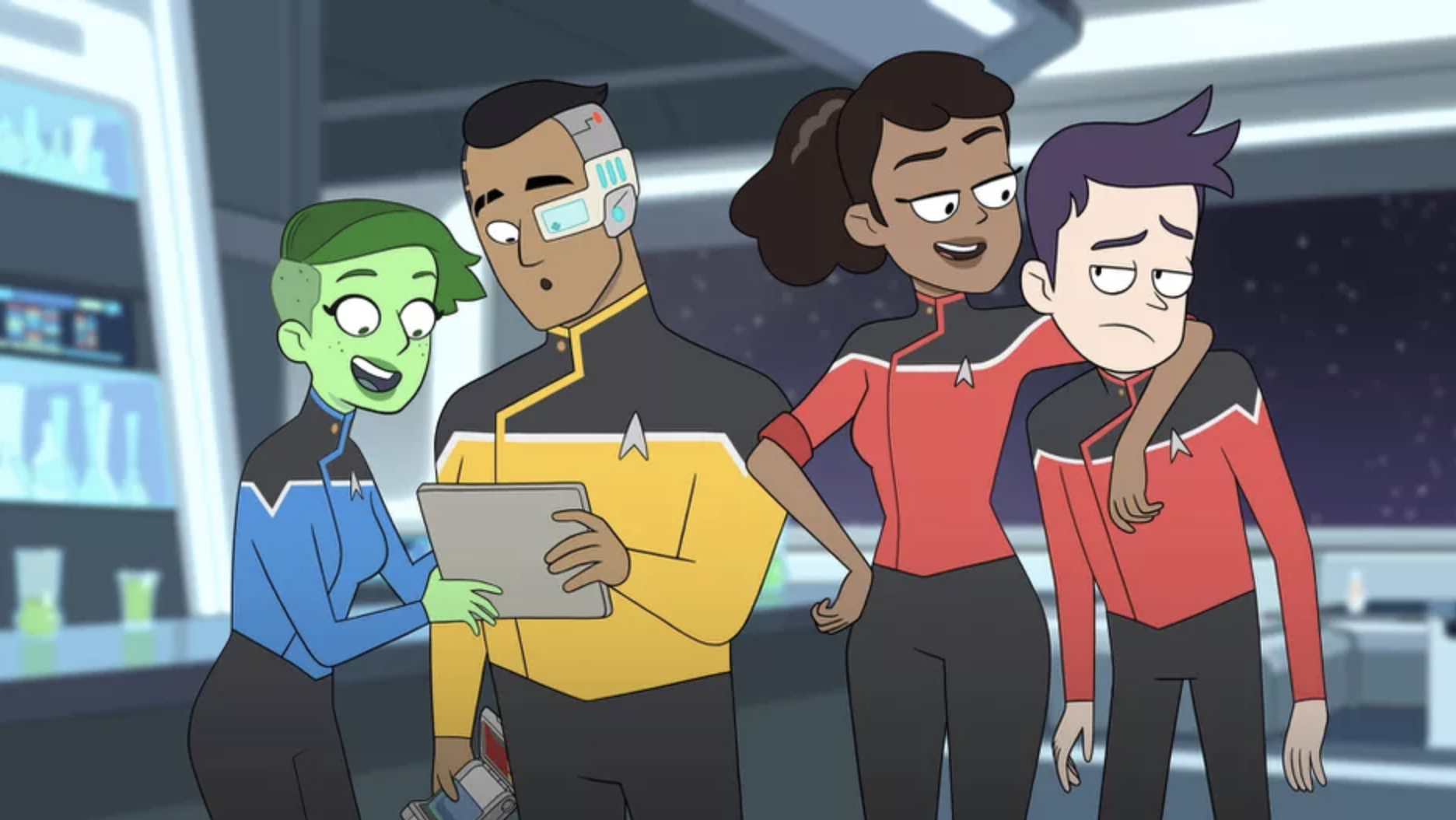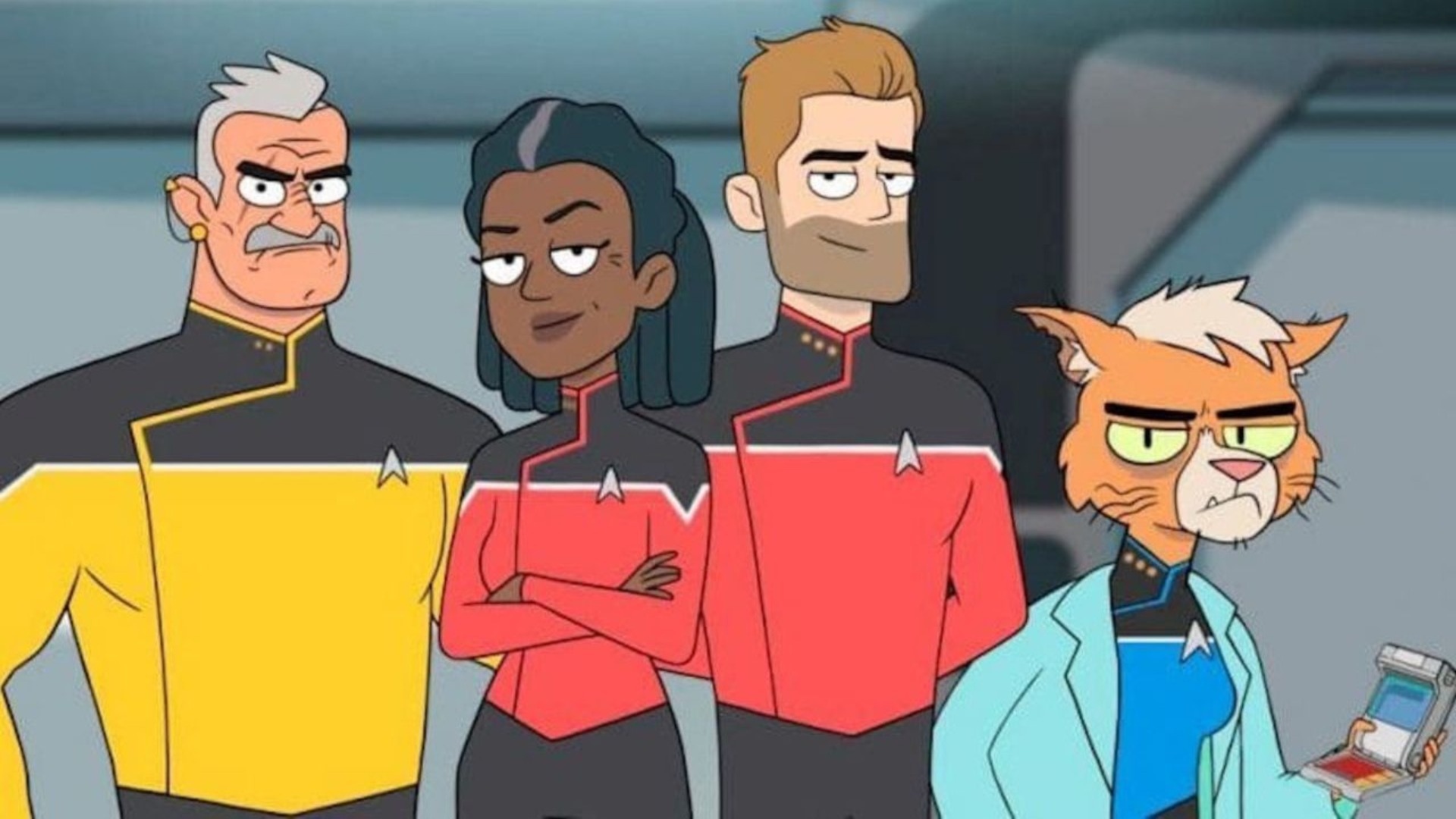GamesRadar+ Verdict
A show that will need some time to become the comedy it truely want to be
Why you can trust GamesRadar+
The '90s and early 2000s were the richest period in Star Trek’s illustrious history. With The Next Generation, Deep Space Nine, Voyager and Enterprise generating hundreds of episodes – as well as five movie adventures – it was a good time to be a Trekkie.
It turned out, however, that you really can get too much of a good thing. Star Trek eventually became a victim of its own success, and by the time the franchise limped to a halt with Enterprise and the feeble Nemesis, it felt like the whole Federation needed a rethink. With the honourable exception of the risk-taking Deep Space Nine, the TV shows had become so bound up in upholding Trek creator Gene Roddenberry’s conflict-free vision of the future that episode after episode felt like it had been churned out of a replicator. What had worked on The Next Generation seemed increasingly tired when it appeared on Enterprise a decade later.
Luckily, it looks like the modern incarnation of Star Trek TV has learned from the mistakes of the past. With six distinct shows in various stages of production and development, we’re in the midst of another massive Starfleet assault on the small screen – but this time, nobody could accuse anyone of relying on previous Trek blueprints.
And so, after Star Trek: Discovery introduced Starfleet to the F-Bomb, and Star Trek: Picard gave Jean-Luc a bleak future nobody anticipated, we get a show that really does boldly go where no Trek has gone before – in fact, it’s arguably the most radical departure the franchise has ever made.
While Star Trek: Lower Decks isn’t the first Trek cartoon – The Animated Series continued the Enterprise’s original five-year mission in the ’70s – it is the first out-and-out comedy. As such it has to walk that fine line between respecting Trek mythology and being funny. It’s a balancing act it manages to pull off – more or less…
The idea of following junior crew members who rarely set foot on the bridge isn’t entirely original – the new show’s title is lifted from a season seven episode of The Next Generation that briefly shifted the show’s focus to the trials and tribulations of a group of ensigns.

- The Star Trek timeline explained
And although it’s different in almost every other regard, Star Trek: Lower Decks does make clear it’s set in the same era as TNG. So aside from the uniforms having gone through a subtle makeover, the interiors of the USS Cerritos are remarkably familiar – complete with LCARS computer interfaces and holodecks – and populated by a crew of recognisable species, including Trill, Orions and Bajorans. Even the credits are a homage, with lovingly recreated TNG fonts, an on-brand score, and a Voyager-like fly-past of a planet – albeit one where the Cerritos crashes into an iceberg.
Where Captain Picard’s Enterprise was the flagship of the Federation, Captain Freeman’s Cerritos is at the other end of the fleet, a vessel with the dubious honour of specialising in second contact situations. But even on a non-elite vessel like this, the command crew still feel light years away when you’re trapped in more junior positions.
The core group of characters has clearly been assembled with comedy in mind. There’s ambitious, by-the-book Ensign Boimler (voiced by The Boys’ Jack Quaid), who hopes he’s on a fast track to the captain’s chair; Ensign Mariner (Space Force’s Tawny Newsome), the rebel of the group, who revels in questioning authority and winding up Boimler; medic Ensign Tendi (Noël Wells), the newcomer to the Cerritos who serves as the audience’s eyes on the ship; and engineer Ensign Rutherford (Eugene Cordero), whose new cybernetic implants suggest he’ll occasionally have the logical air of a Data/Spock figure. But only occasionally.
There’s enough in their interplay to suggest they’ll be a fun quartet to hang out with – especially in the antagonistic back-and-forth between Mariner and Boimler. Their respective specialities also suggest we’ll be seeing plenty of different areas of the ship.
On the visual front, the show makes the most of the fact it doesn’t have to worry about expensive visual effects or make-up. The episode’s mix of diminutive pig-like aliens, a giant spider and hundreds of zombie crew members would have made it prohibitively expensive in live-action, so it bodes well that the production team are prepared to push the boat out in terms of scale. They also make a sly nod to Star Trek: The Animated Series’s M’Ress, with a chief medical officer who belongs to the same feline Caitian race – it’d have been a massive challenge creating her for real.
It’s not surprising you can see Rick and Morty’s influence on the character design and animation, seeing as Lower Decks creator Mike McMahan worked on both Rick and Morty and Solar Opposites. Unfortunately – and this is the new series’ biggest problem – it’s nowhere near as funny, or as clever, as its forebears. It’s frequently amusing and pokes fun at the oddities of the Star Trek universe as Robot Chicken did at Star Wars, but it never does enough to raise a belly laugh. For a show as fast-paced as this, it’s disappointing the gag rate is so low.
But is it Star Trek? With references to Geordi’s VISOR, Starfleet regulations, Romulan whisky, a cha'Dich and even Gary Mitchell, Lower Decks contains enough nods to the past to suggest it’s got its phasers locked on pleasing hardcore fans. And yet the irreverent tone and high levels of misbehaviour (Picard would be in a constant state of facepalm) are likely to wind up just as much of the audience. Trek has always been about exploring strange new worlds, however, so it’s definitely worth giving Lower Decks a chance.
New episodes of Star Trek: Lower Decks stream on CBS All Access in the US every Thursday. UK broadcast is TBC.
Richard is a freelancer journalist and editor, and was once a physicist. Rich is the former editor of SFX Magazine, but has since gone freelance, writing for websites and publications including GamesRadar+, SFX, Total Film, and more. He also co-hosts the podcast, Robby the Robot's Waiting, which is focused on sci-fi and fantasy.



